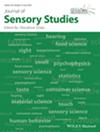Information influenced consumers' attitudes toward A2 milk: An approach using text highlighting technique
Abstract
Dairy products are constantly launched, mainly focusing on healthiness, especially for the public, like people with food allergies. However, raising consumer awareness is a great challenge, especially about new products with health claims. This study used the text-highlighting (TH) methodology associated with acceptance tests to assess Brazilian consumers' explicit attitudes toward A2 milk. In the task, consumers were asked to highlight in a text the terms they “liked” or “disliked” about the milk's nutritional importance, the difference between A1 and A2 milk, health benefits and harmful effects, and the necessity for more studies and awareness about the A2 milk. Sensory acceptance pre and post-text were also measured. A high engagement of consumers with the TH could be observed, which suggests good intuitiveness of the technique. Including information about the nutritional value of milk and the difference between both kinds of milk may increase positive consumer perception, as it encourages consumers to express their value judgment in the form of “liked”. On the other hand, information simultaneously, the harms of the formation of BCM-7 (in A1 milk) prompted consumers to express their value judgment in the “disliked” highlights. This underscores the importance of raising consumer awareness about the product and the need for more studies on the real effects of A2 milk on the body and the implementation of specific legislation. Moreover, it was observed that information should be in a simple and direct language, as technical terminology in the text did not have a positive effect, such as the information about the genetic mutation. TH produced valuable insights that can be used in communication strategies with A2 milk.
Practical application
The findings of this study show practical utility for consumer-based methodologies, focusing on the text-highlighting method approach and its influence on consumer perceptions. Moreover, the results show practical utility to direct regulation, consumer awareness, and product commercialization of A2 milk.

 求助内容:
求助内容: 应助结果提醒方式:
应助结果提醒方式:


